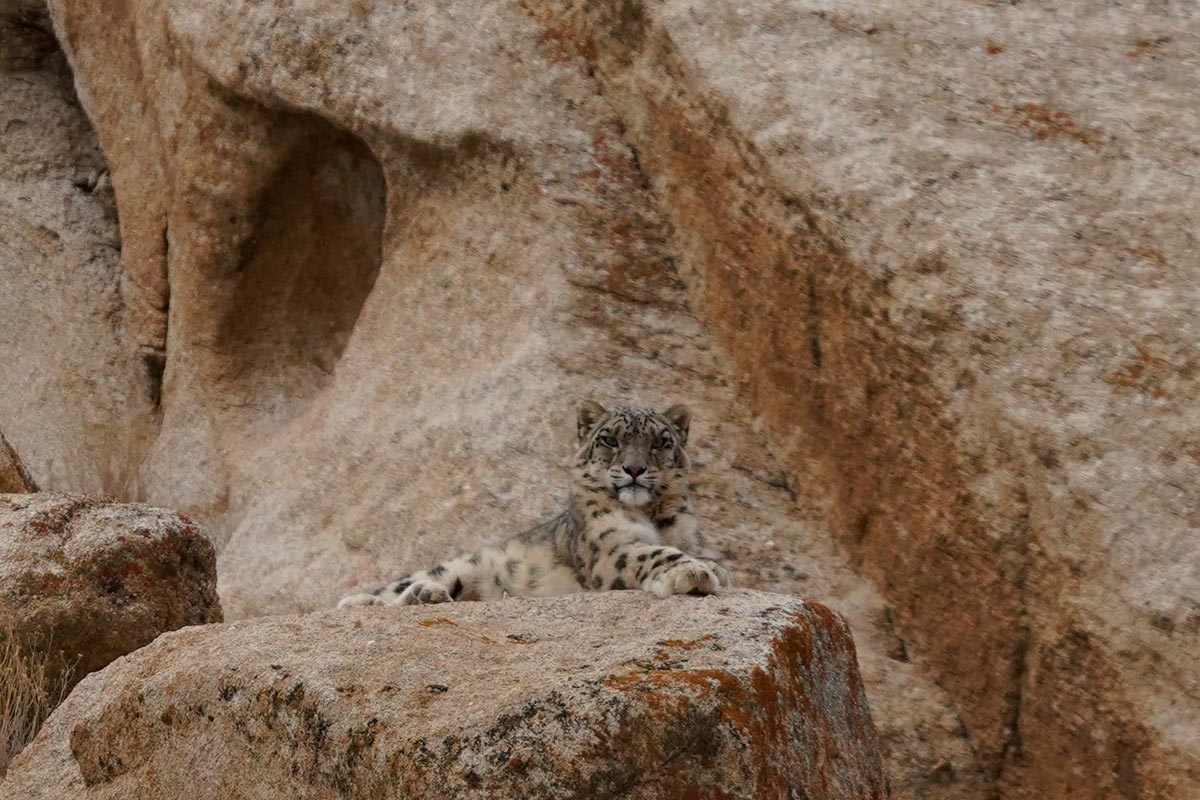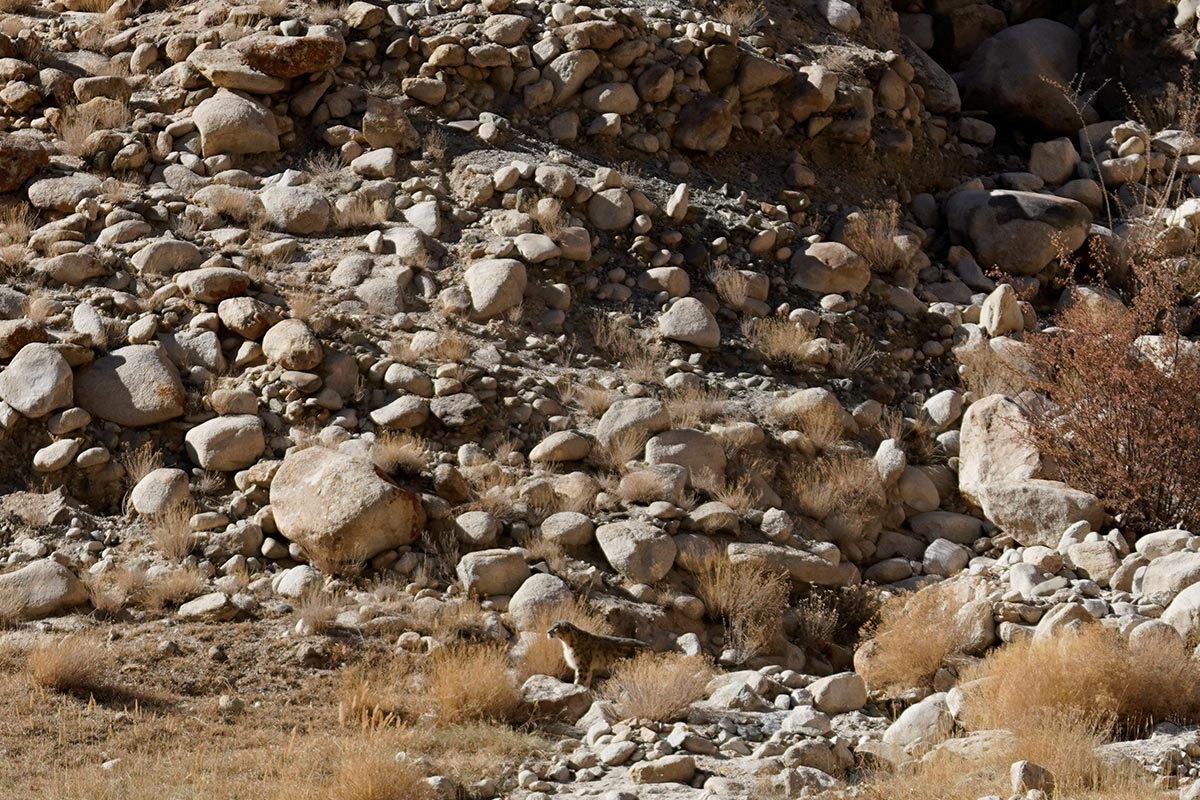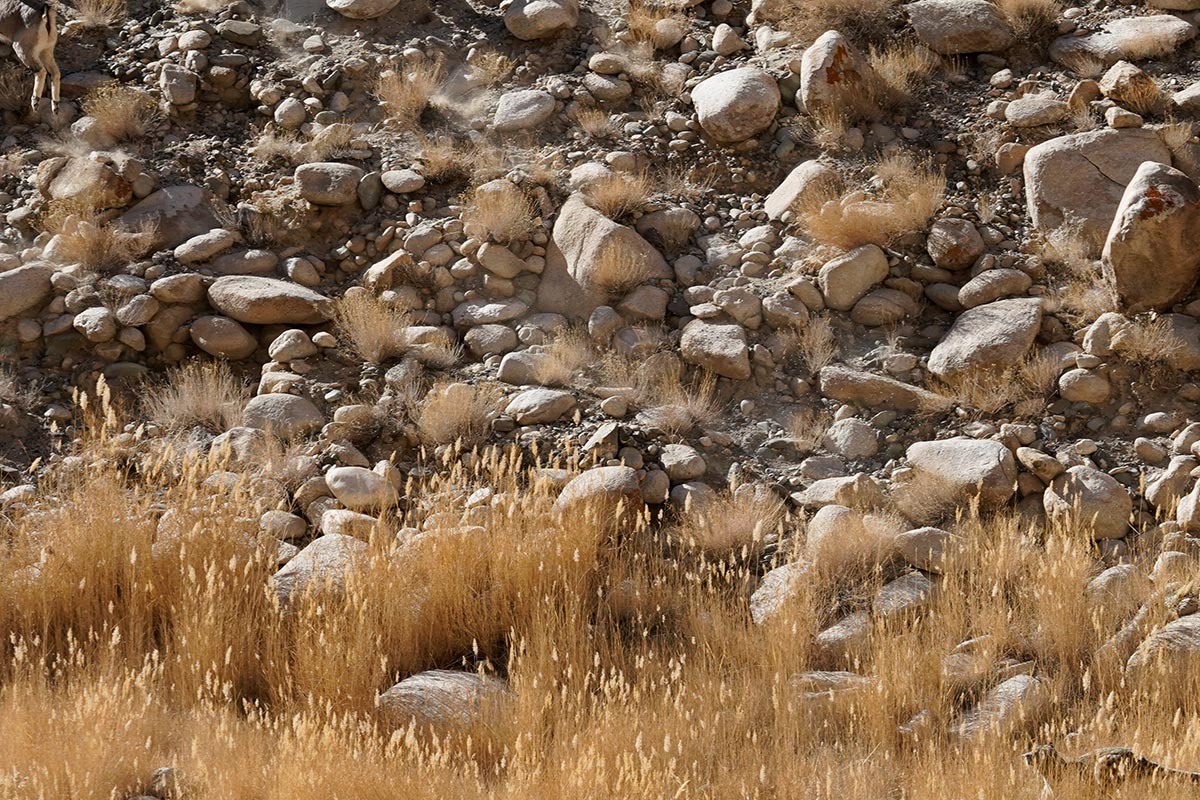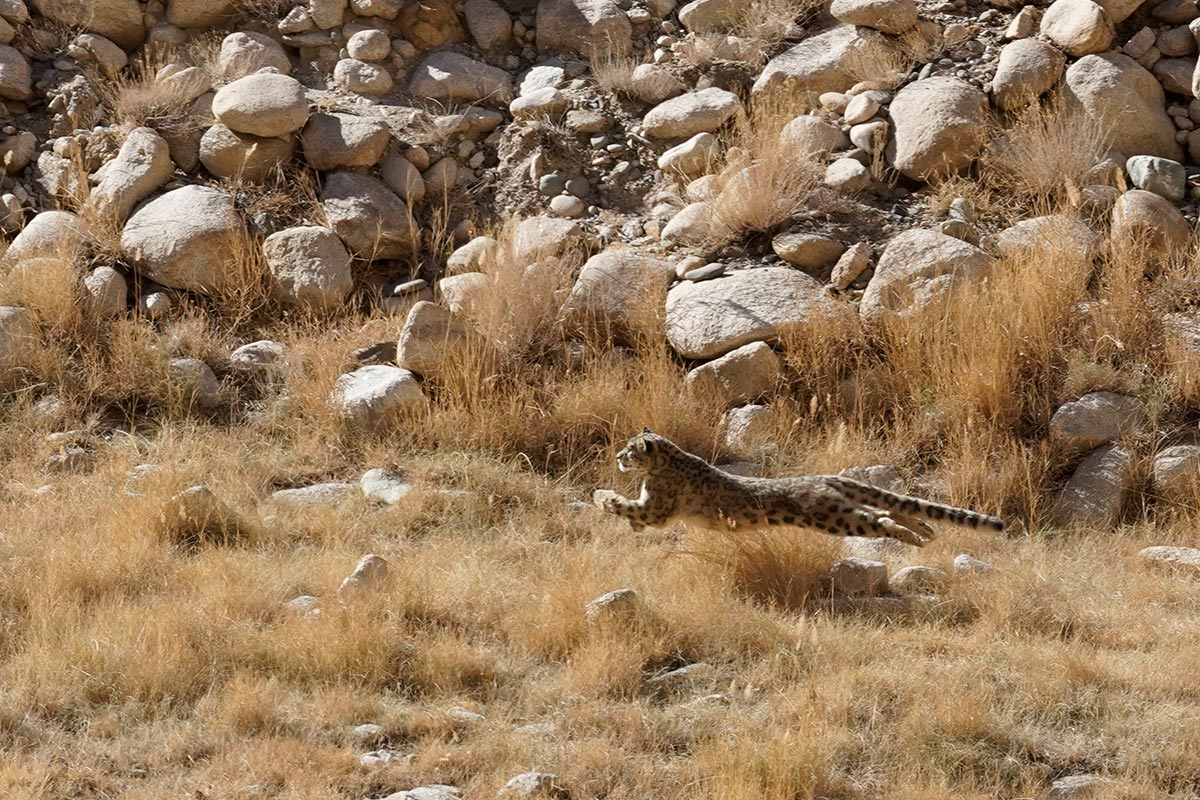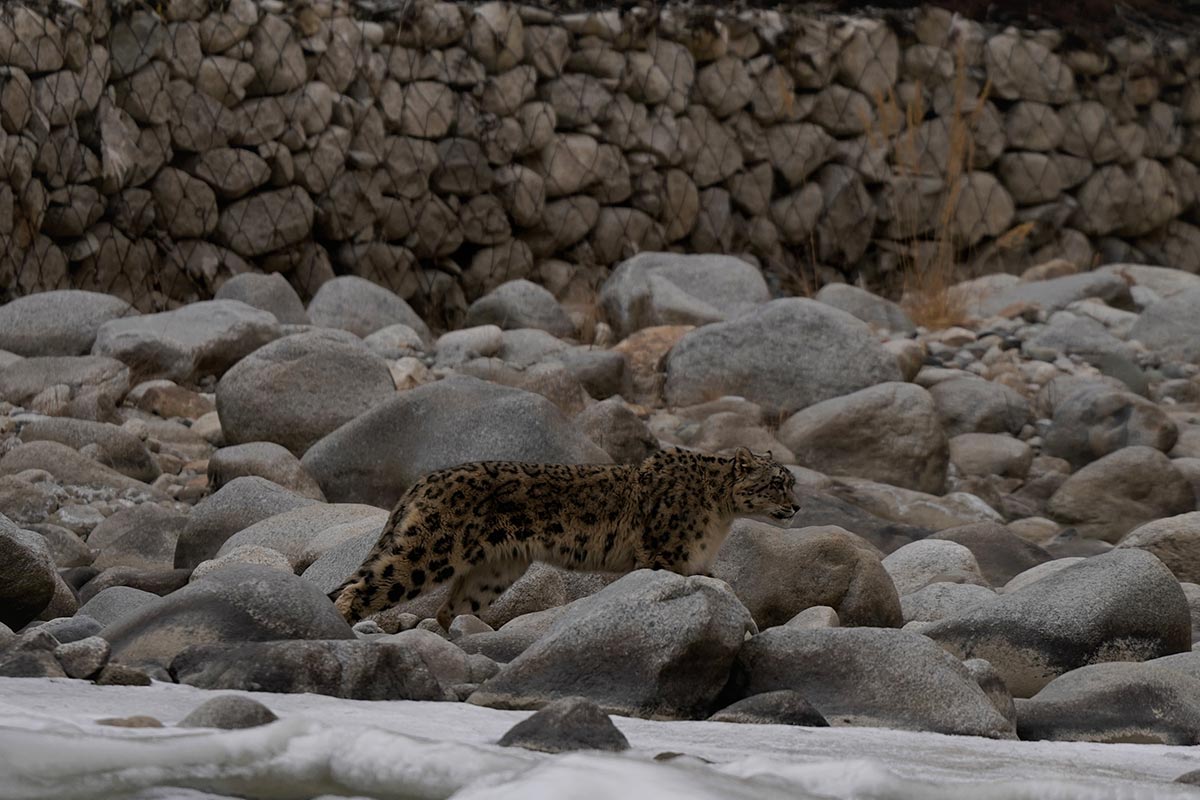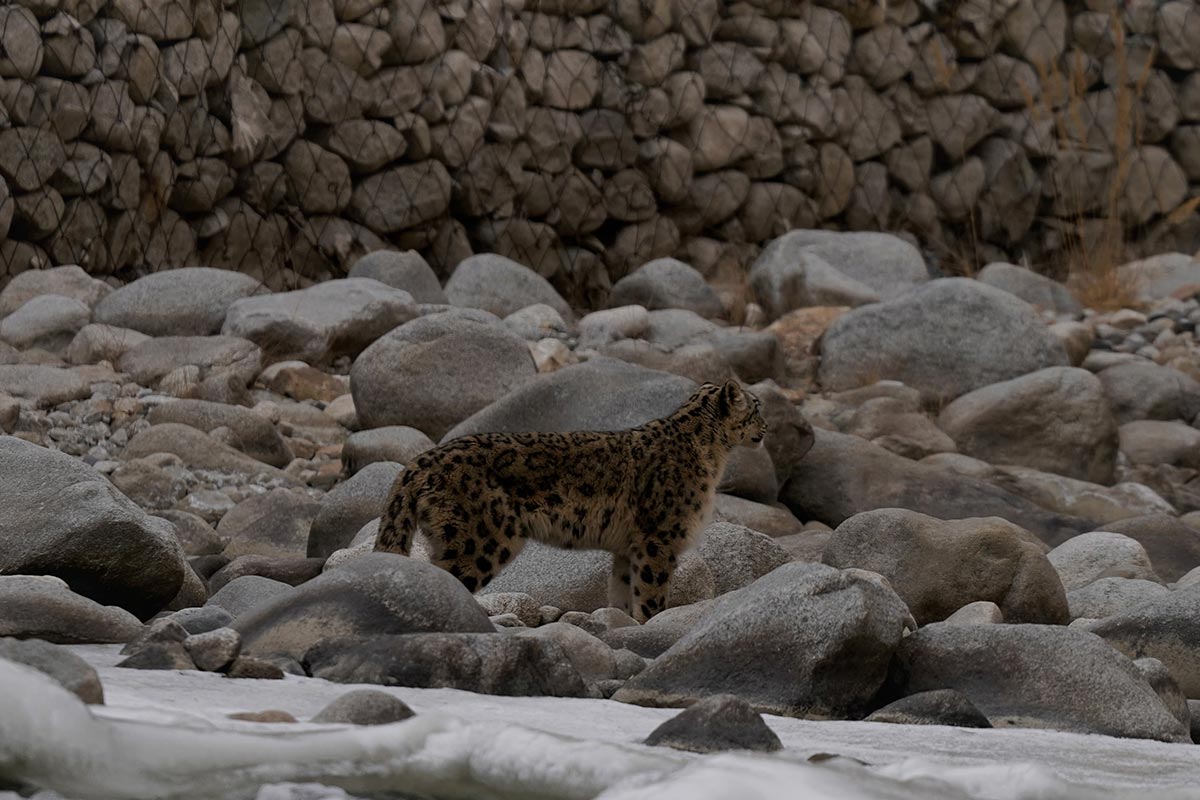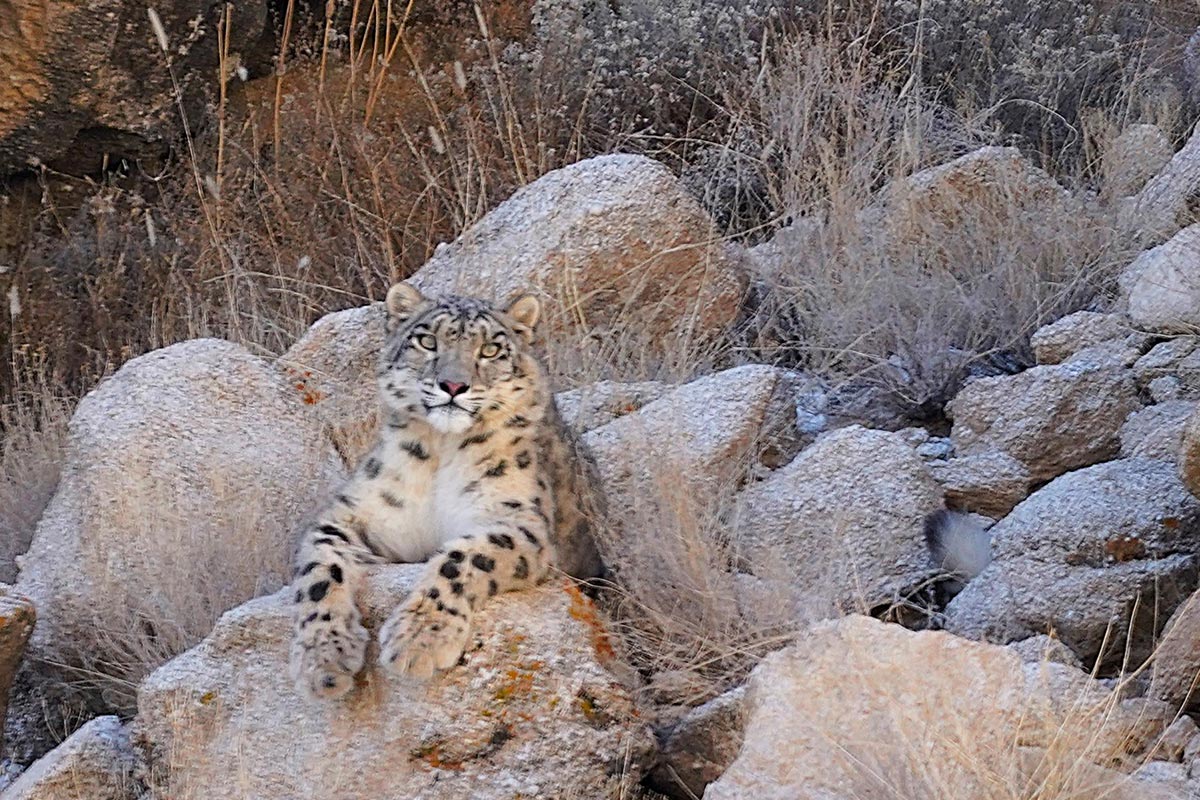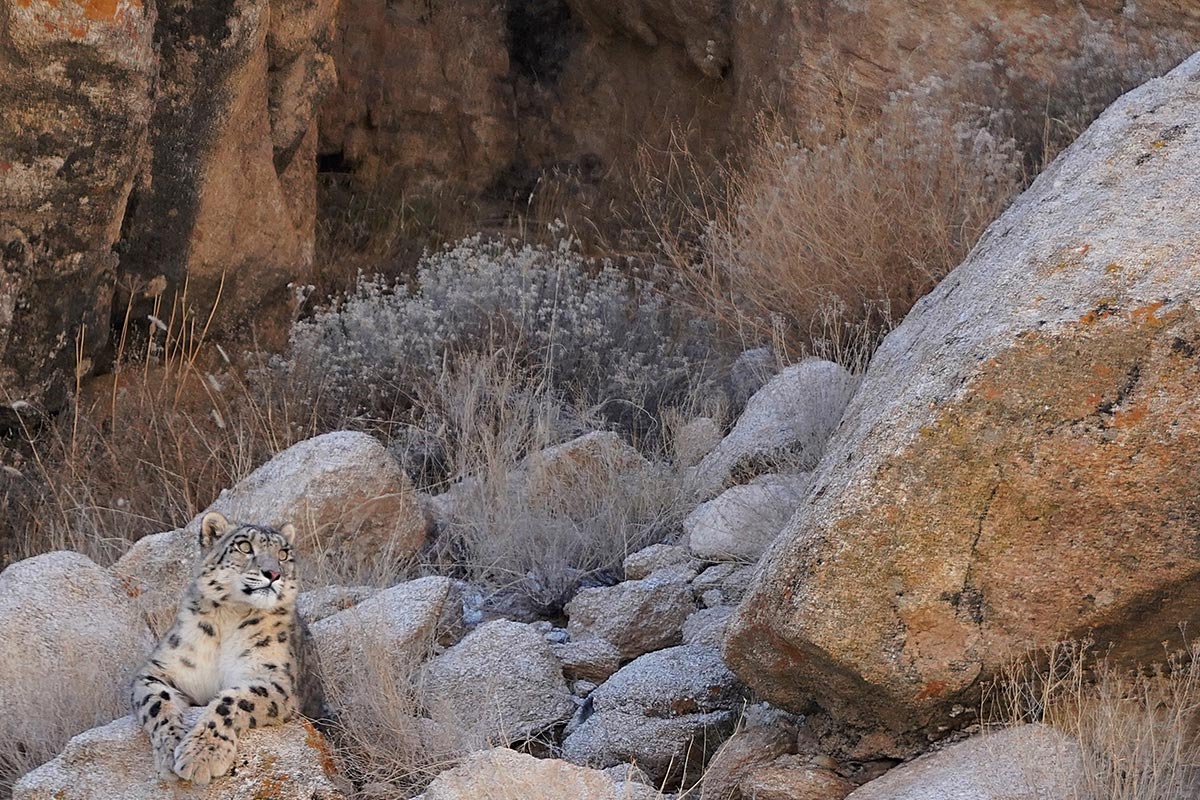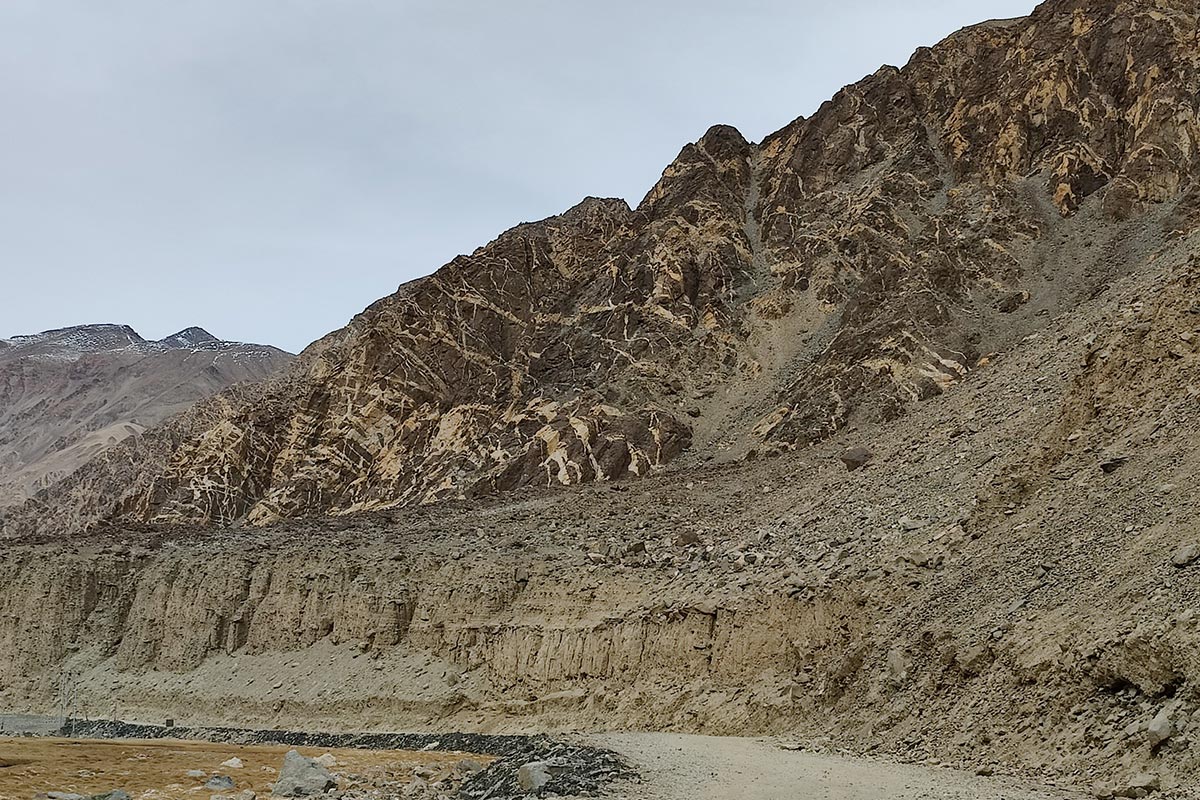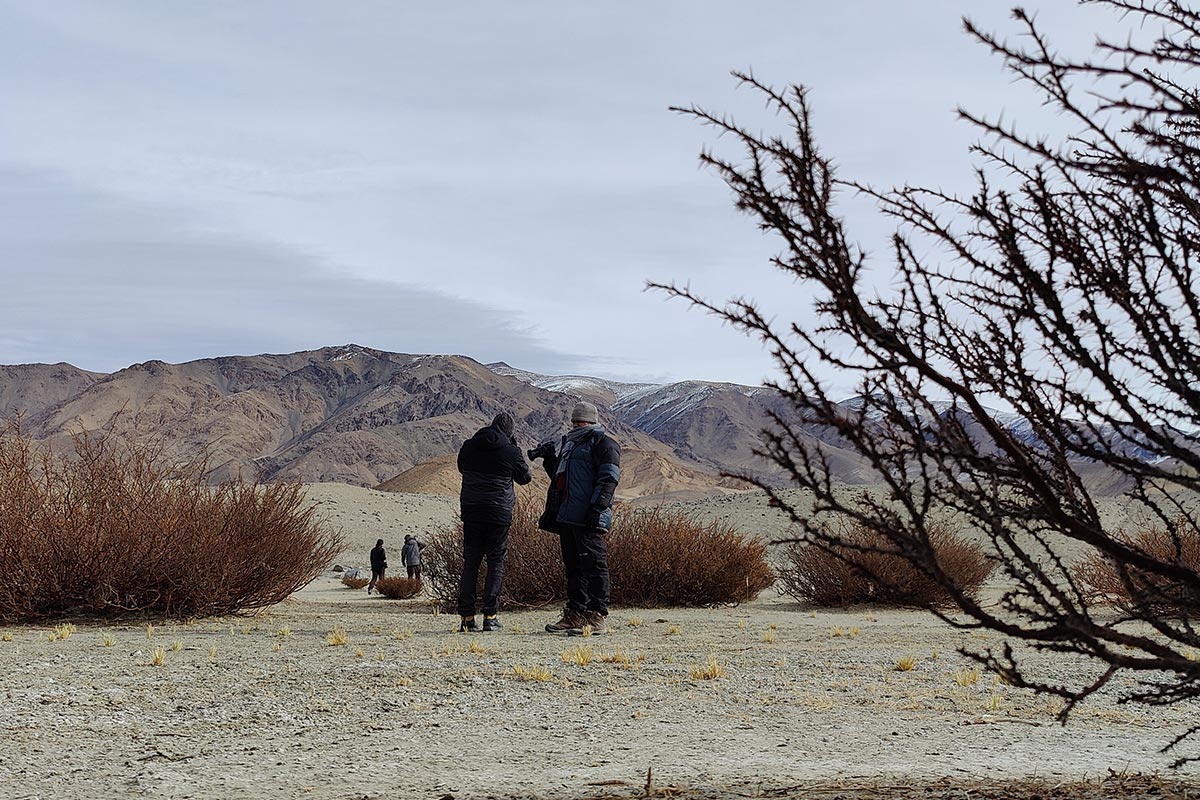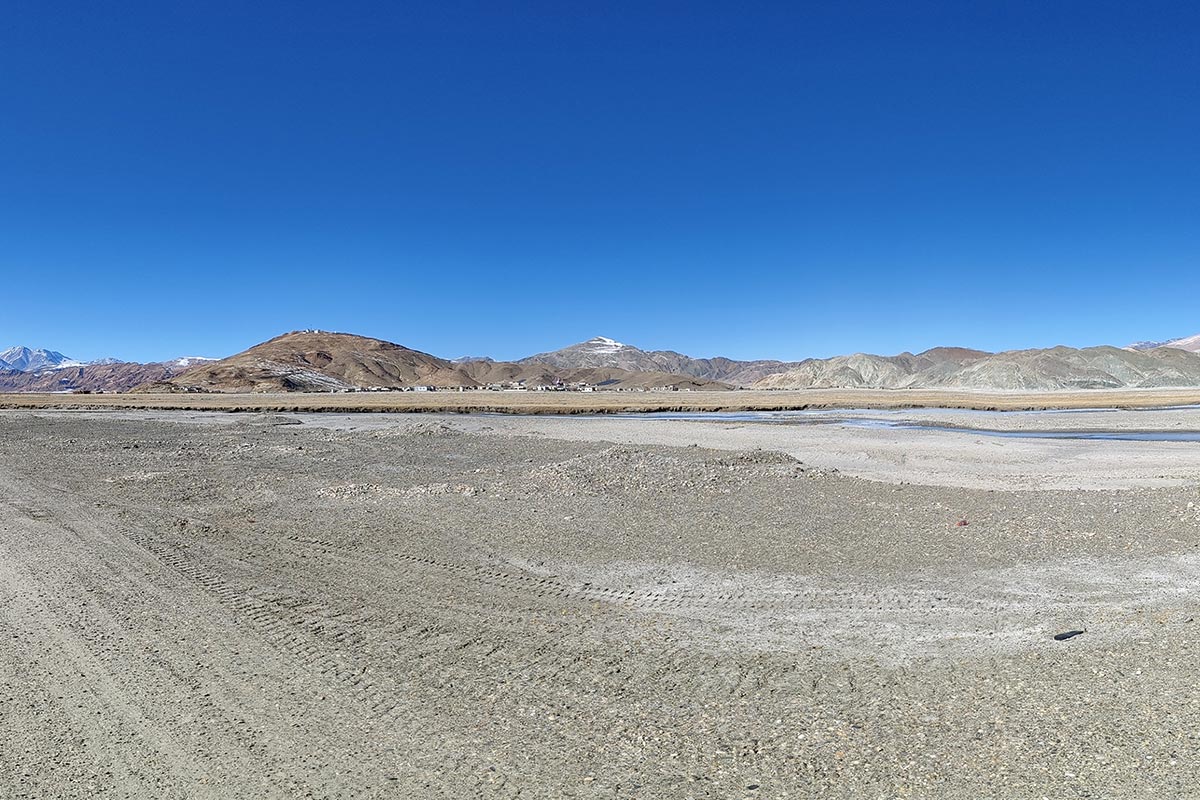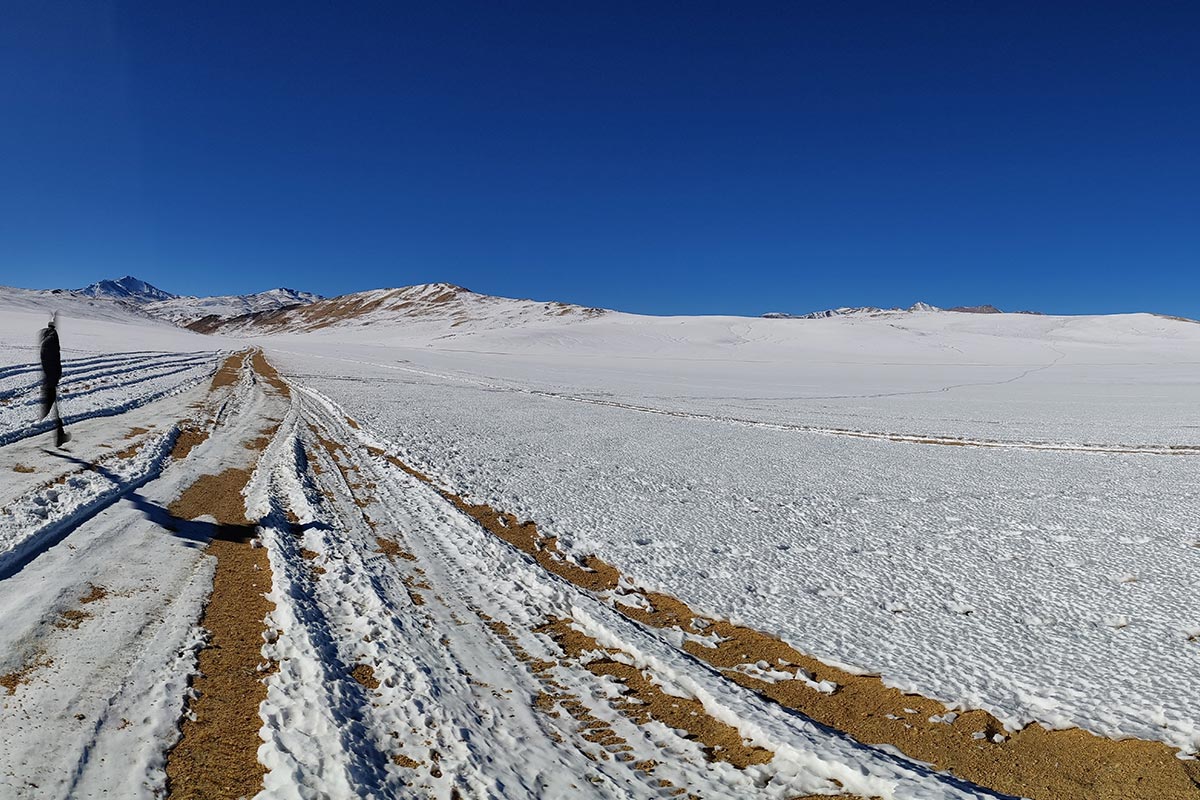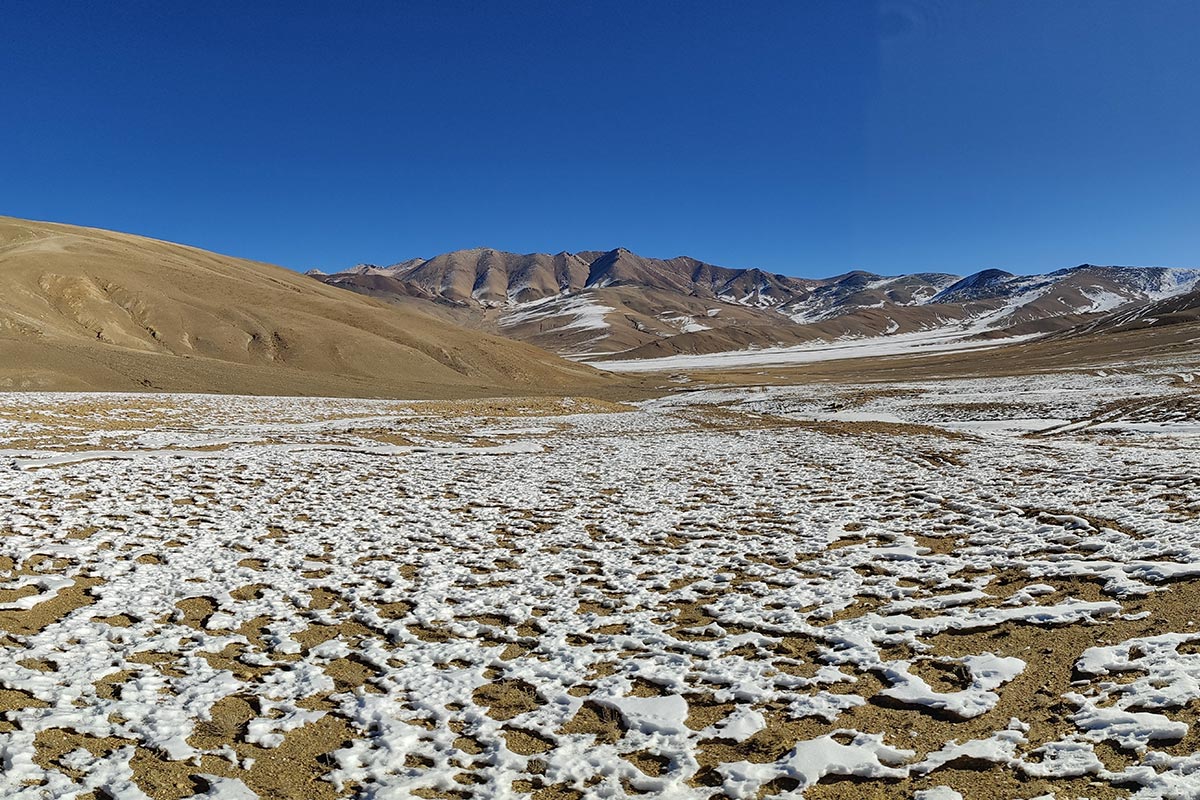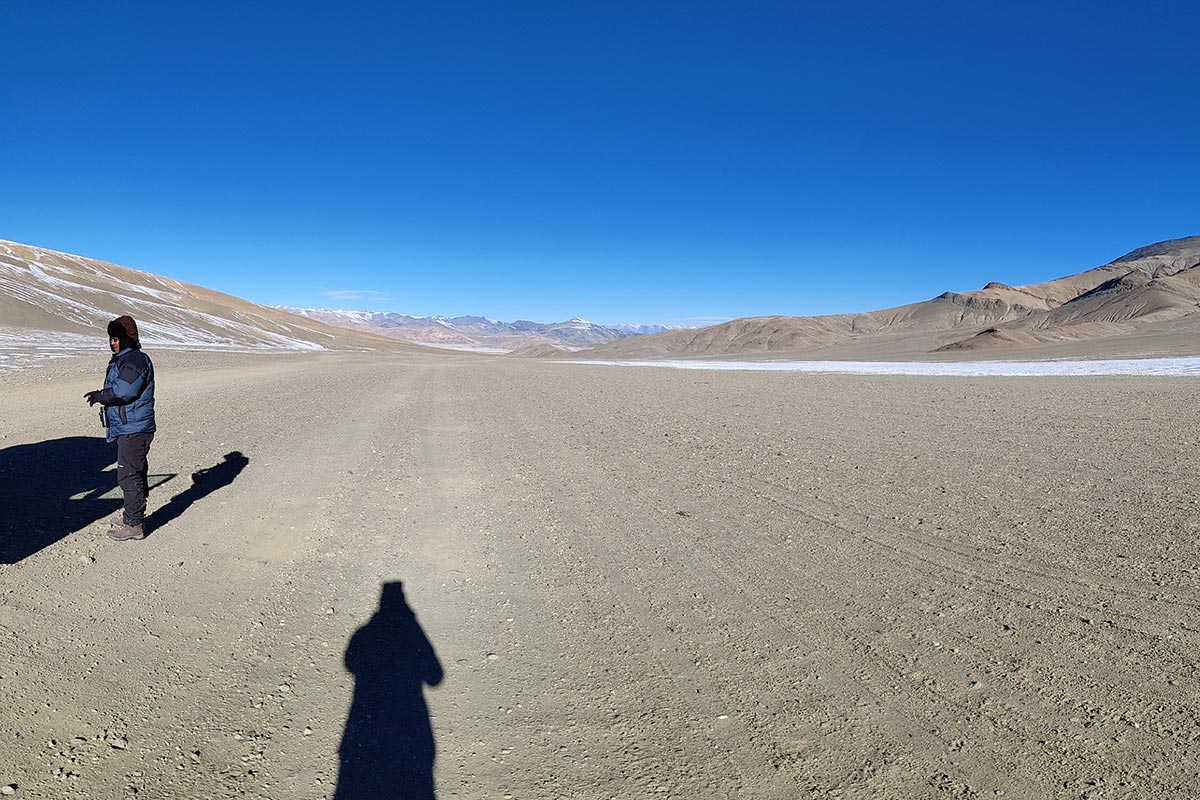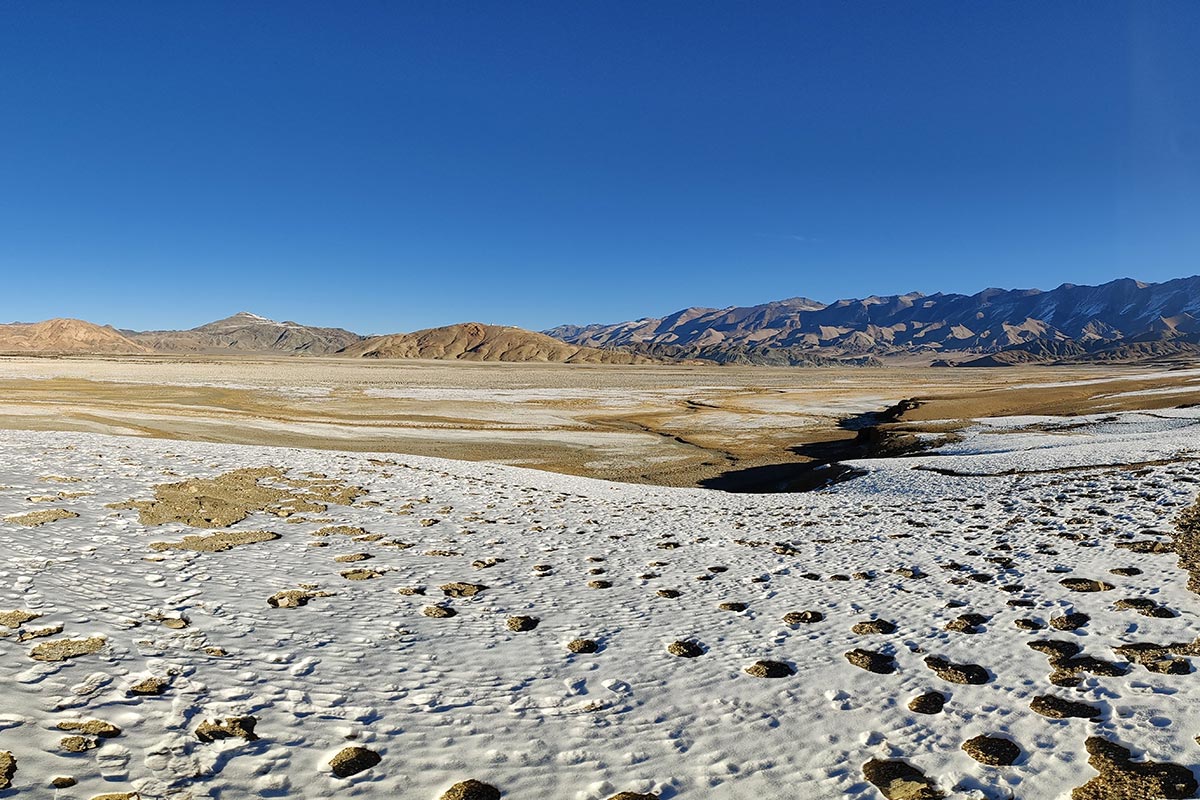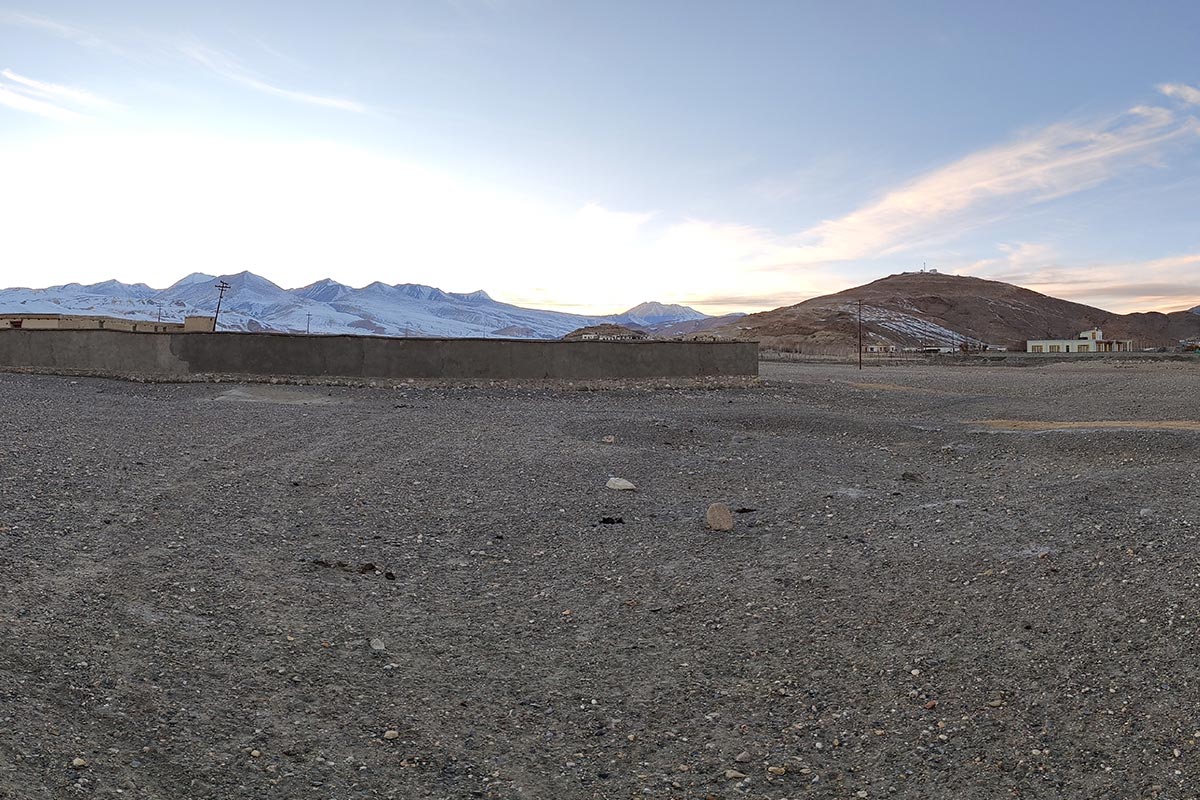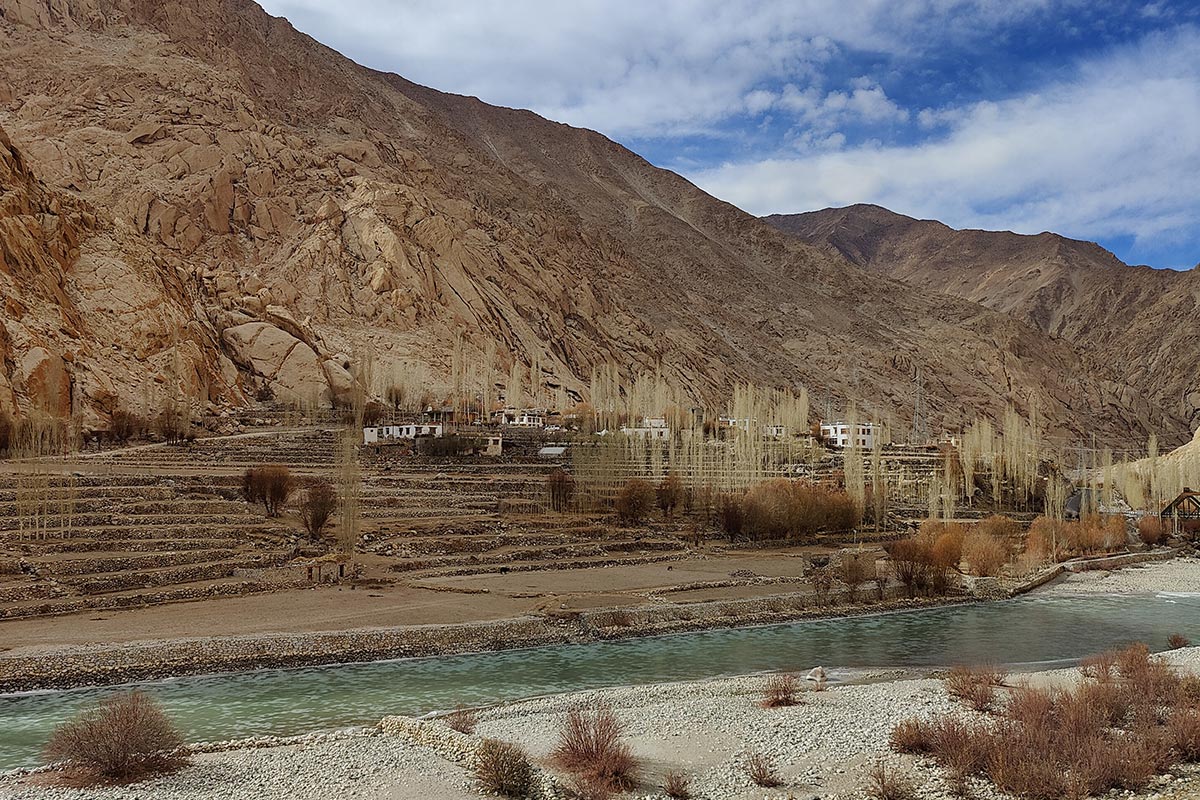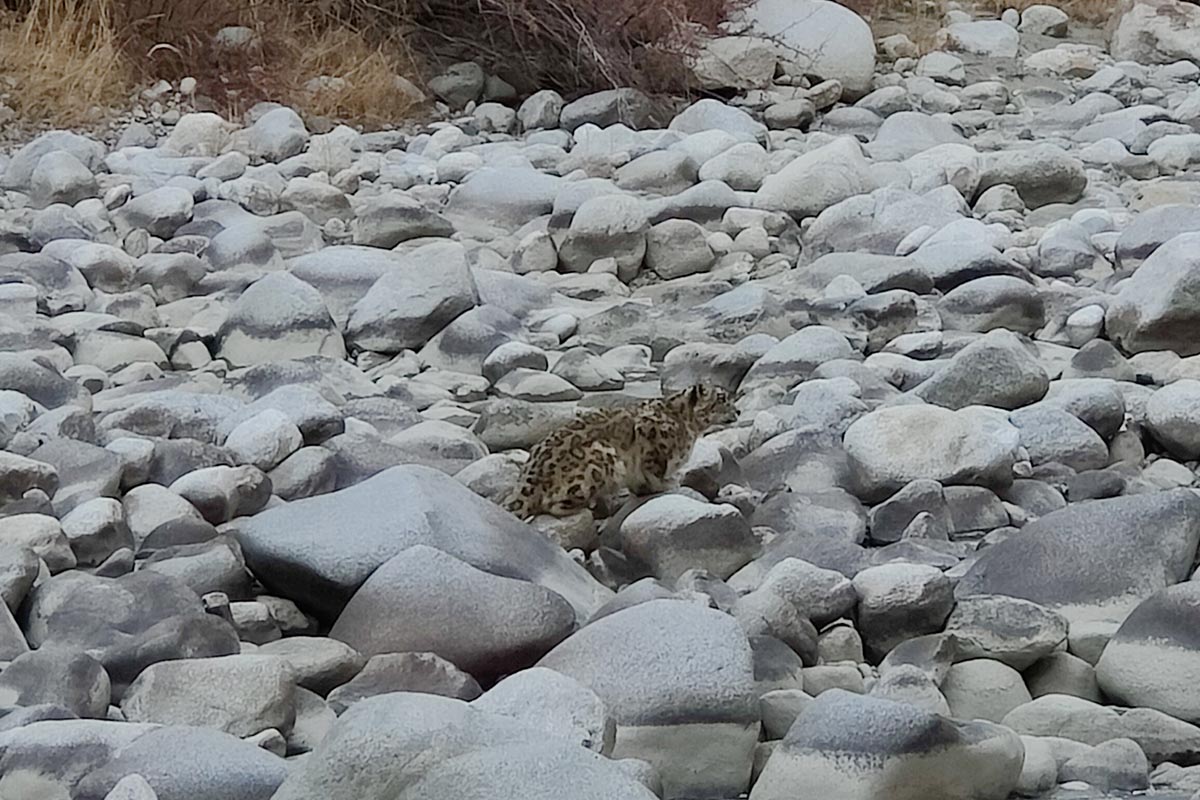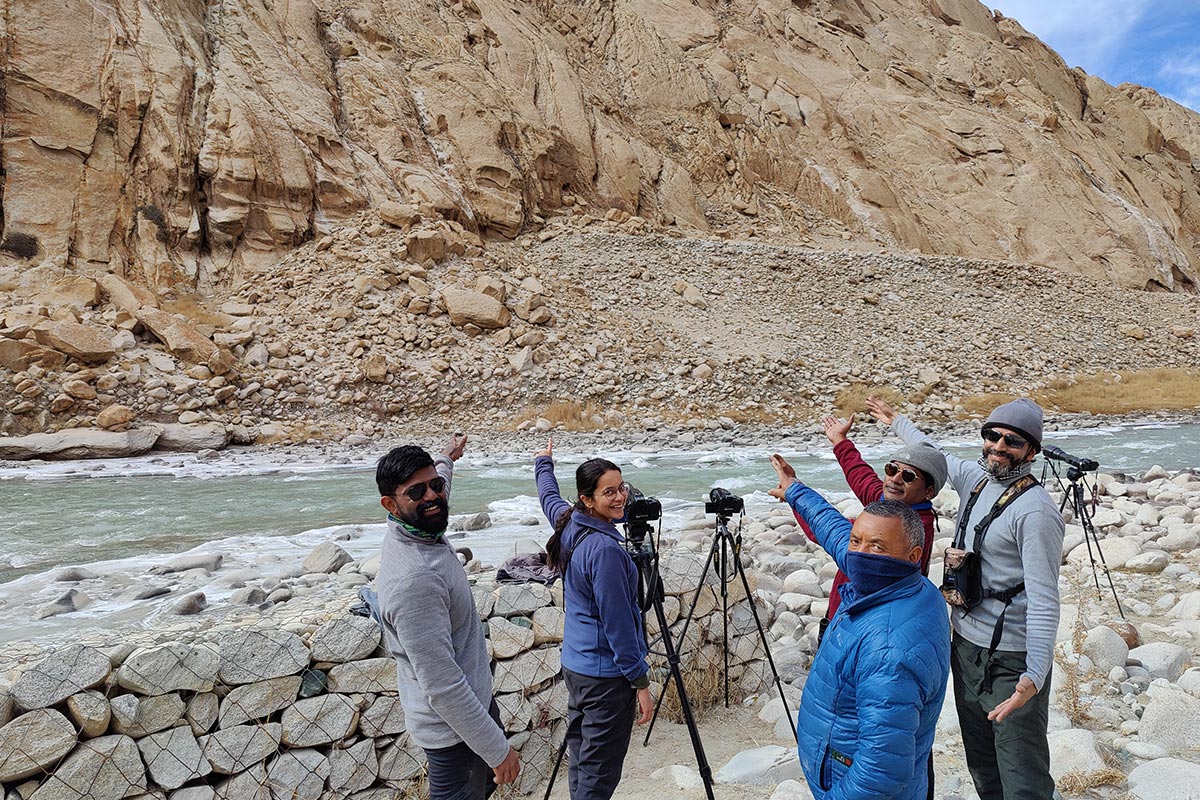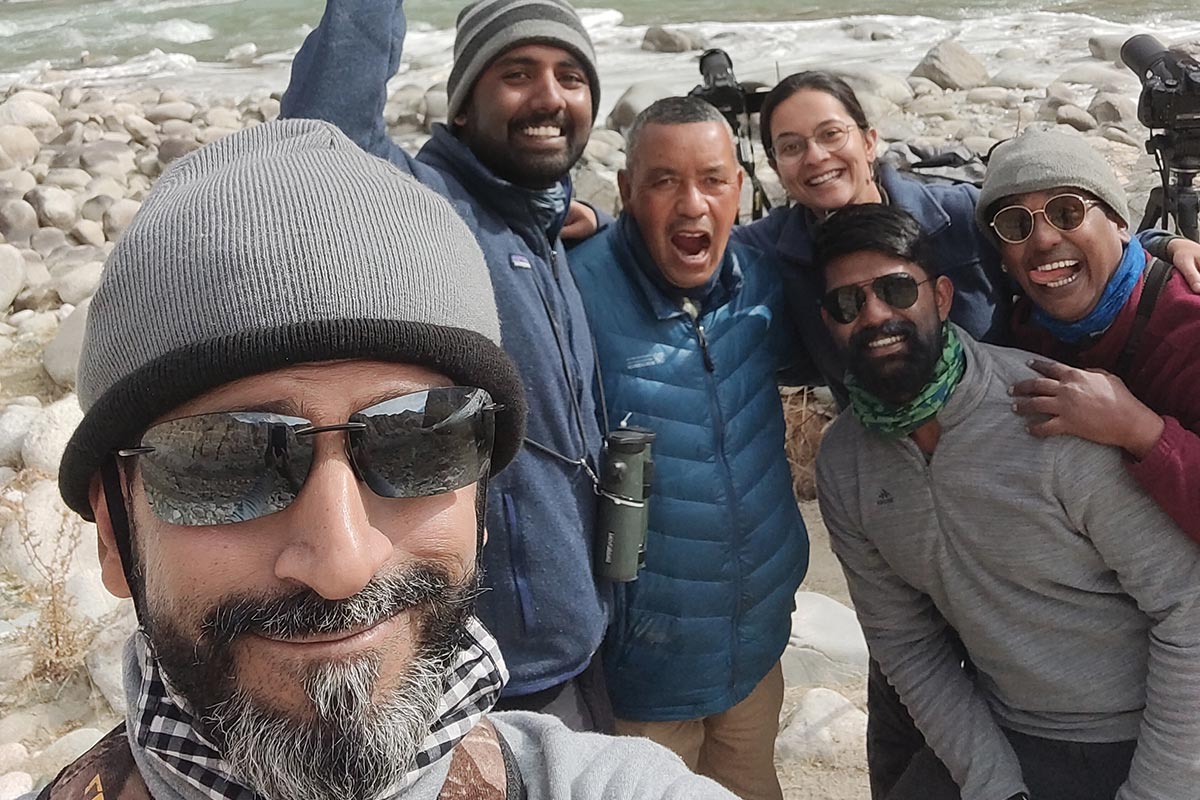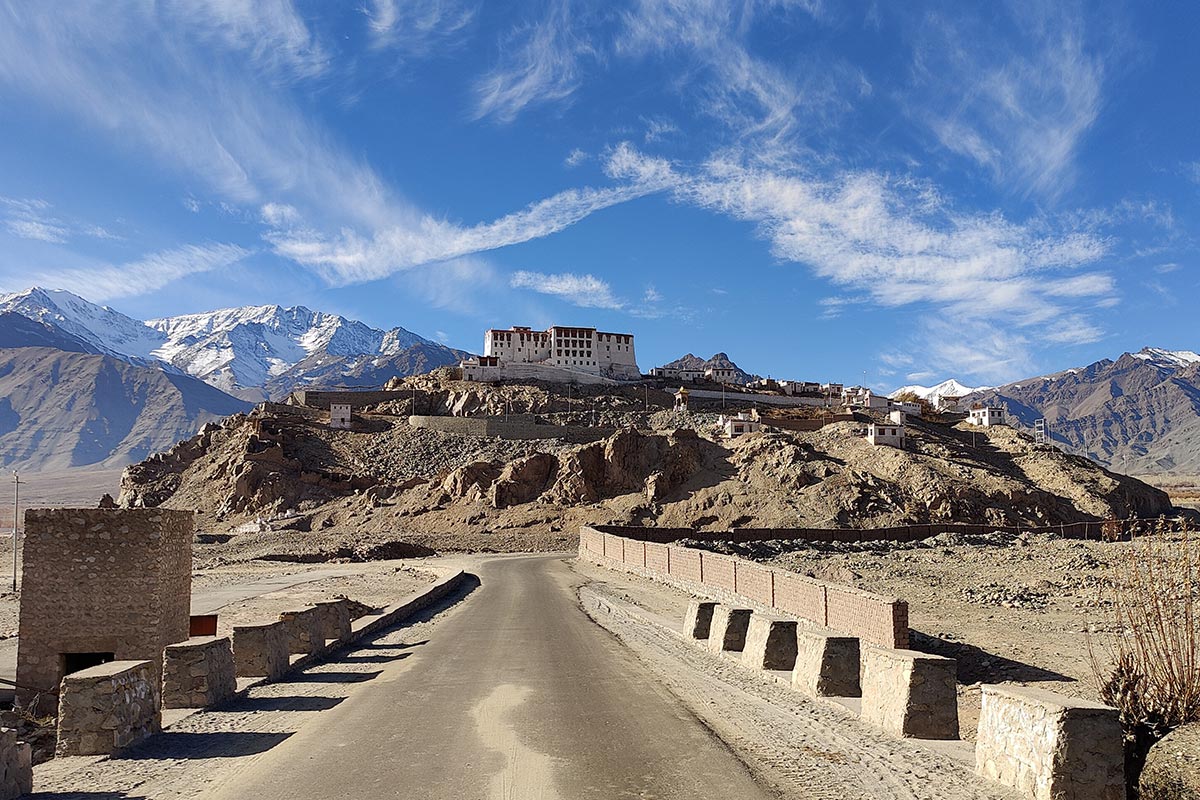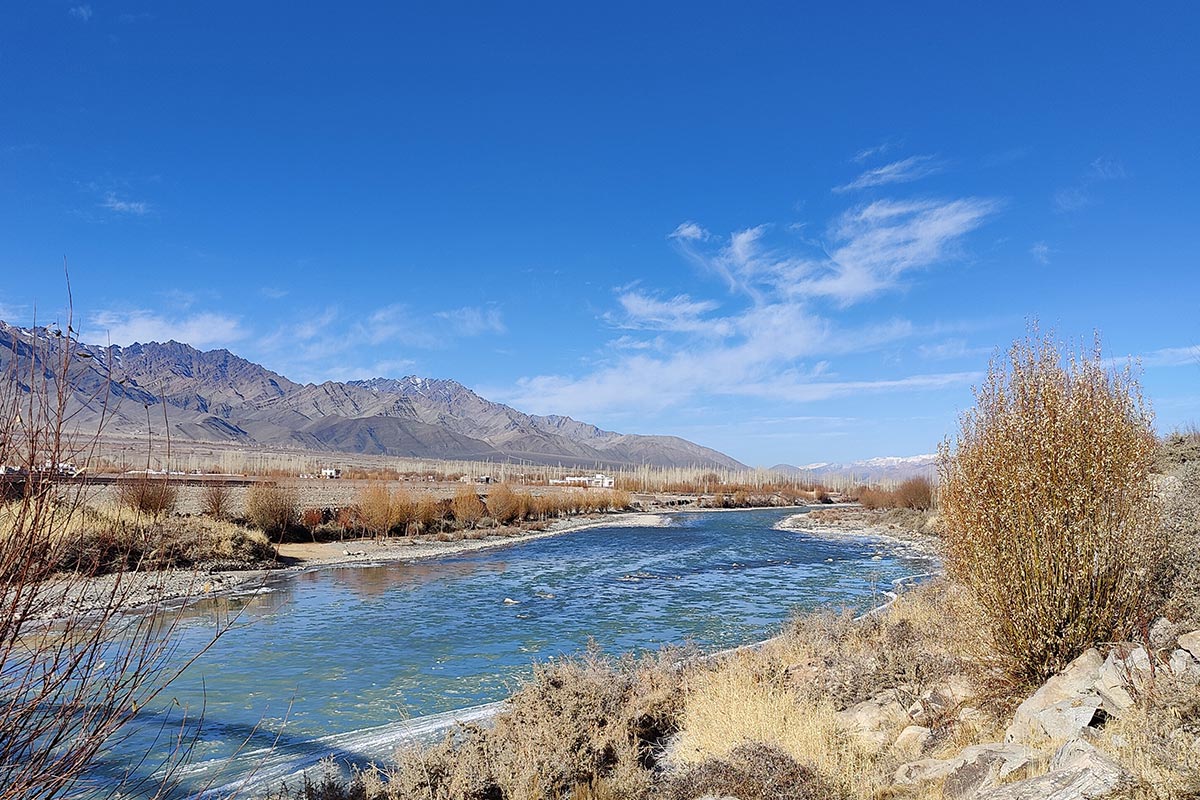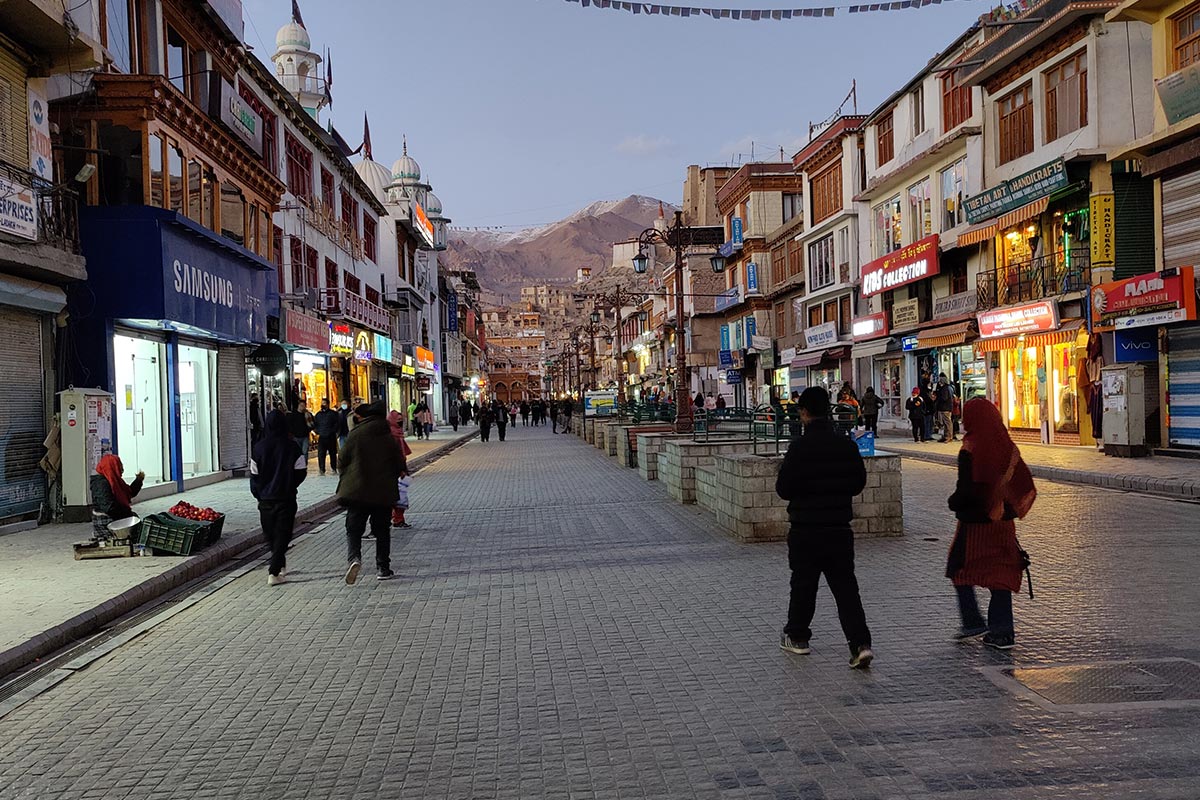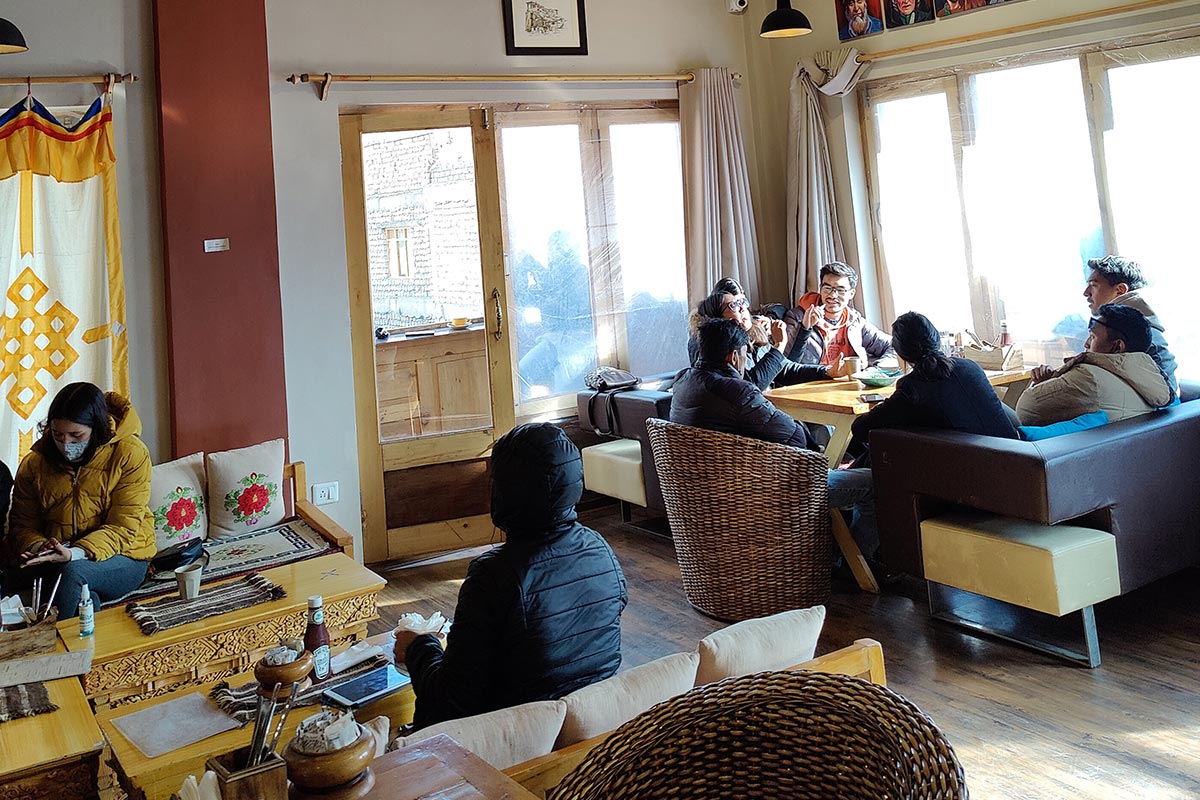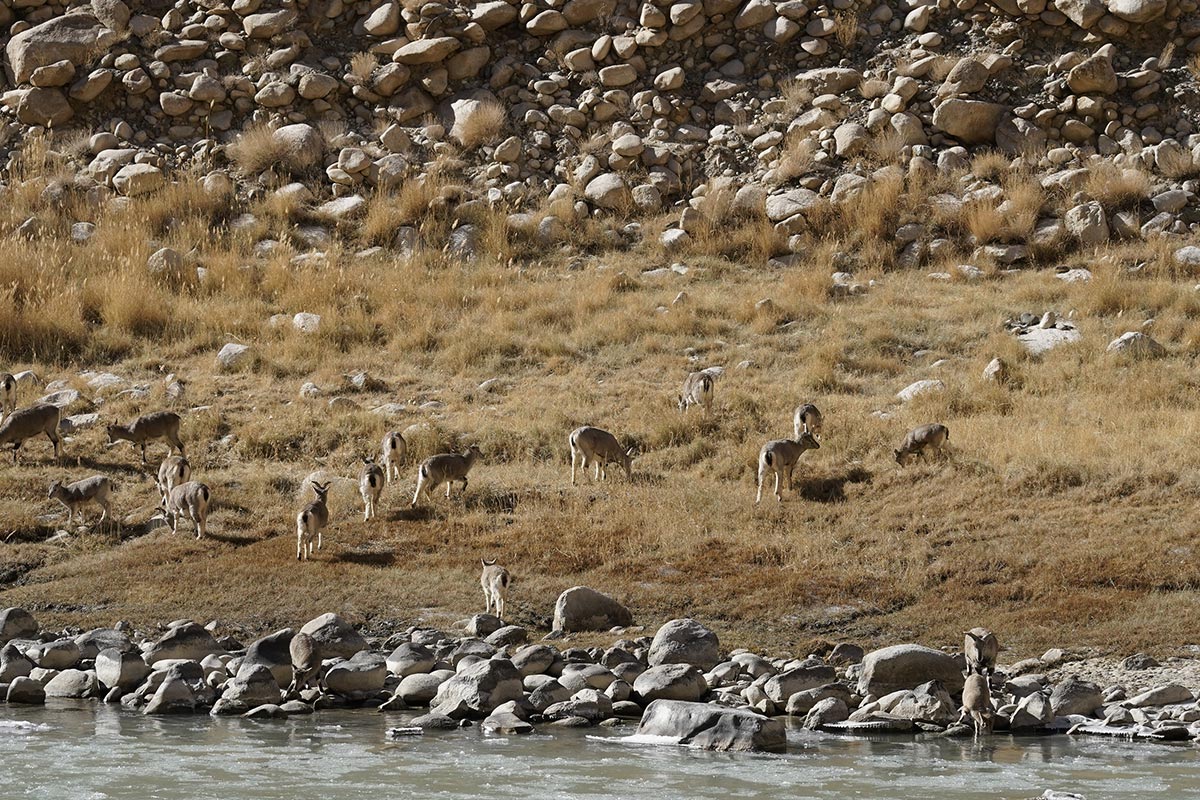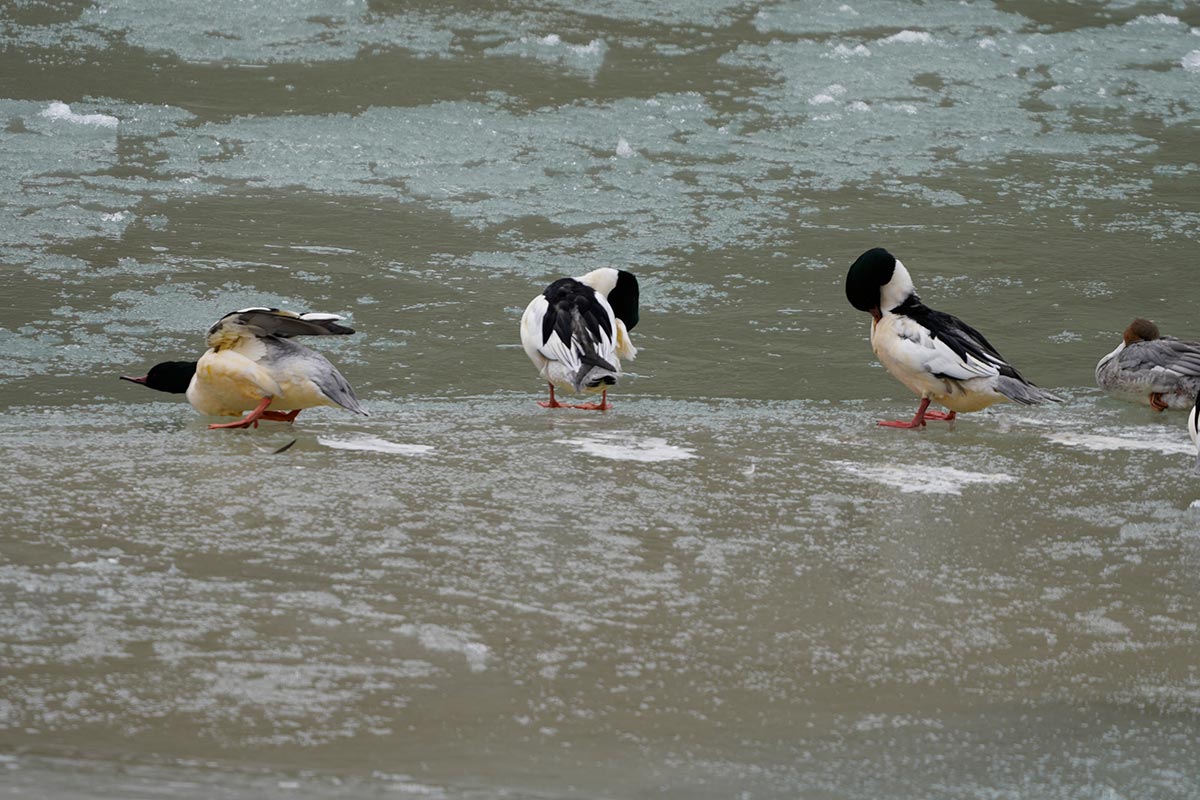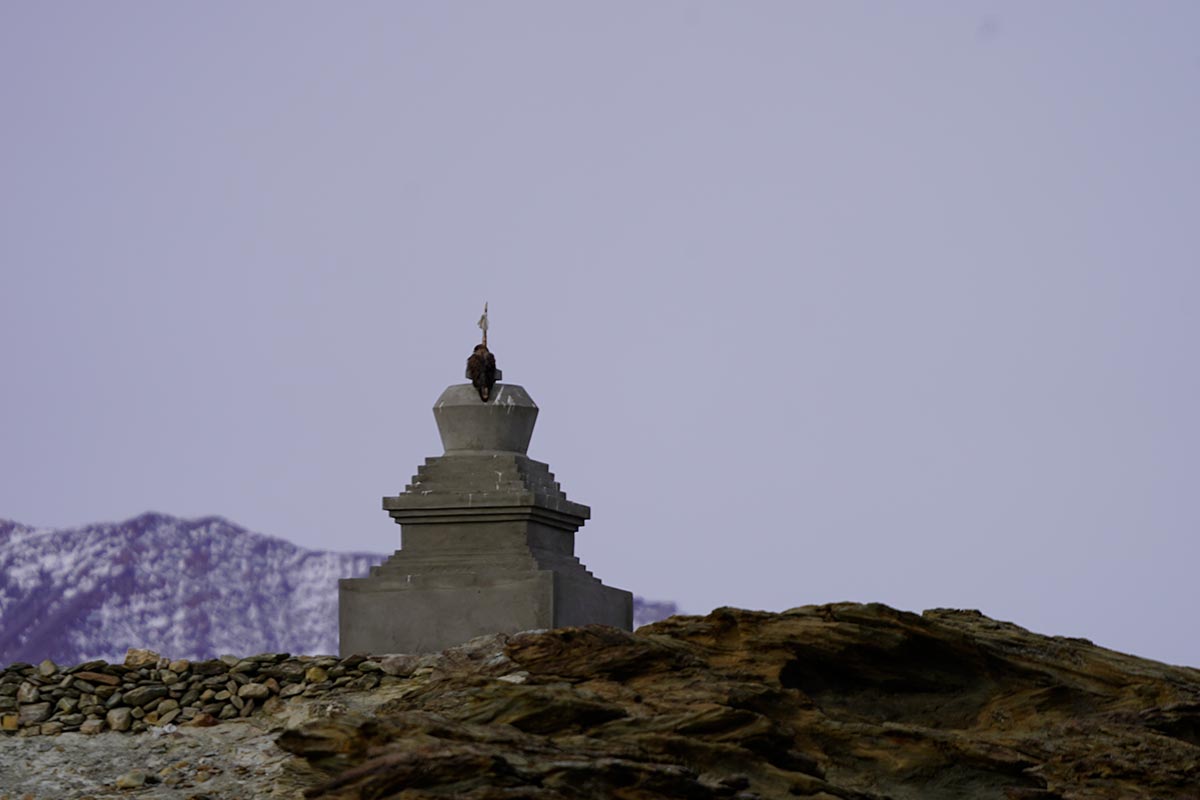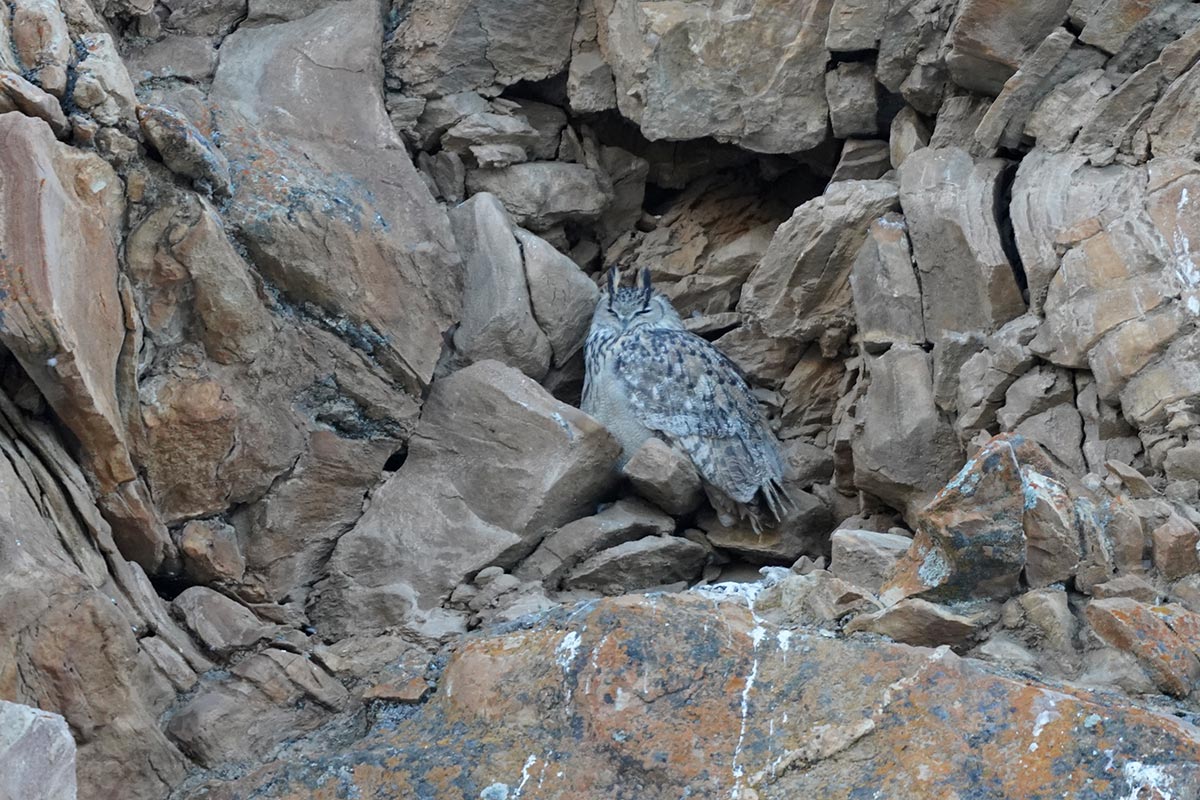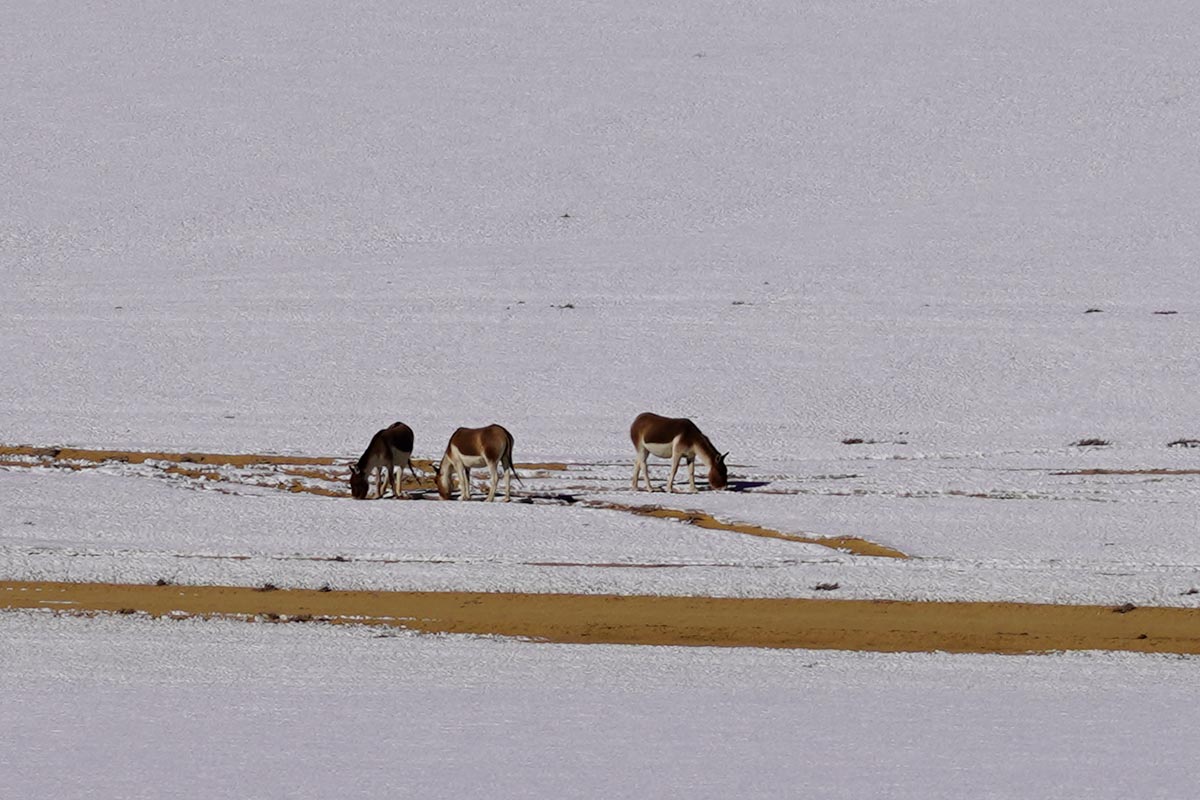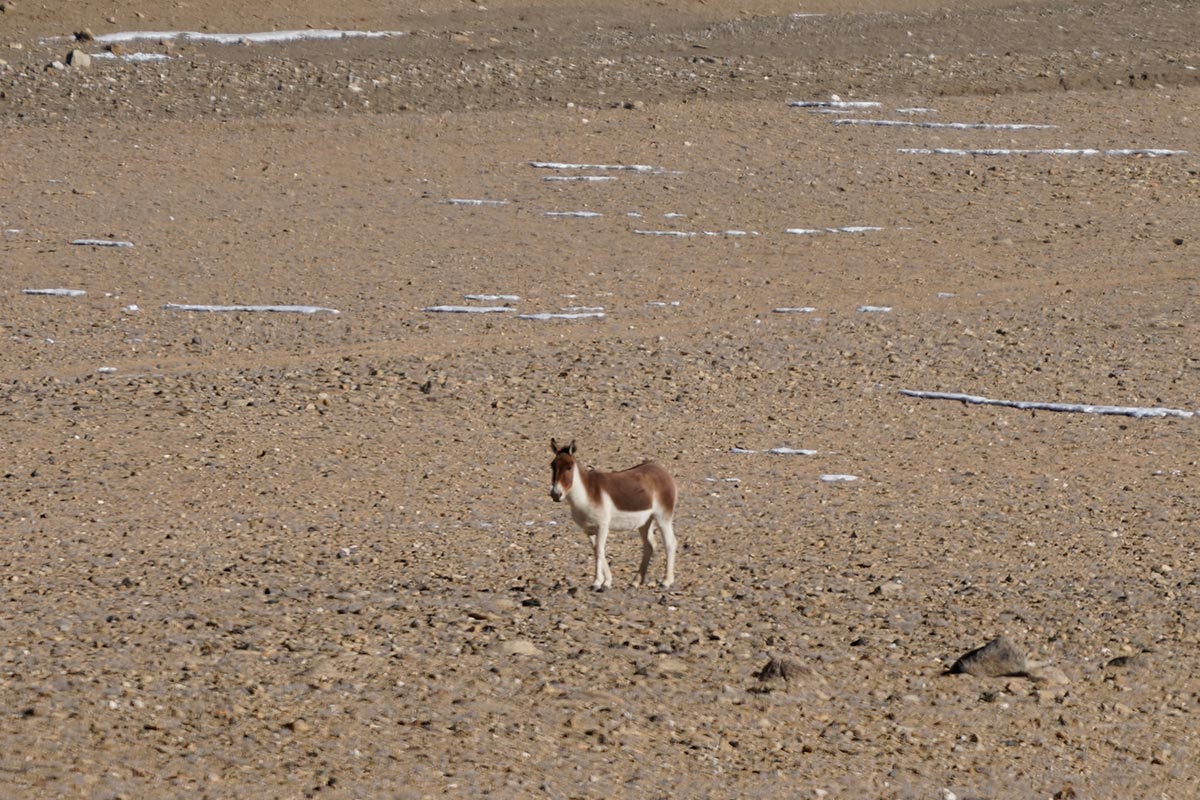6 Nights / 7 Days
26th Nov to
2nd Dec 2021
Cold Days / Very Cold Nights
4-6 People
Ladakh, Jammu & Kashmir
Introduction
Planning
It all started with a simple message from Surya on November 11th saying; “Sameer. three days of lynx focussed hiking in ladakh (Hemis NP) on 28 29 30. Faiza n two other people. Do you wish to join ? Whole trip including acclimatisation will be 26th November to 2nd December. ”. The rest as they say is history, since my excitement at the thought of tracking a phantom amongst cats, in a dream destination like Ladakh for the first time ever, overcame the slightly fearful thought of doing so in -20’C at 4000+m. The next couple of weeks were spent in consistent preparation and shopping to prepare for making sure I had every round of high altitude gear and keep up my levels of fitness and strength in order to survive and be able to enjoy the experience in such an environment.
The plan changed to going after an equally rare cat in the Pallas’s Cat, Wolves, and Birds in Hanle a couple of days before the trip, but was done without batting an eyelid or hesitation since the whole ambience of what we were tracking and the anticipation of what we might see was that exciting. The sense of wonder began of where one was going during the flight itself. Crossing hundreds of kilometres of snowcapped mountains and glaciers, and then finally landing in a desolate and bare looking valley of Leh that just fascinated the visual with it’s uncharacteristic beauty.
Day 1. 26th November
Acclimatization in Leh
The first day was spent in the hotel and the room as one just hydrated, slept intermittently, and allowed one’s self get used to the shock of the cold and the 3300m altitude.
Day 2. 27th November
Meeting the Group and Visiting Leh Market
The second day was a lot easier, since one was just settled and the body had acclimated to the altitude and climate. The day was spent meeting the group, exploring Leh Market, it’s culinary treasures, and placement amidst a surround of Snow Capped Peaks and rocky escarpments.
Day 3. 28th November
Departure for Hanle and the Ladakh Landscape
The 28th of November started at a comfortable 9:00 AM for us, with Hanle being 6 hours away and the hope of getting there in decent daylight hours to aid the acclimatization from 3300m to 4500m and temperature difference from -10’C to -20’C. The scenery and the feeling of visual carnival it encapsulated was a consistent for the entire trip and consistent with Ladakh itself. Right from the blue unpolluted skies (if you’re from a city like Delhi, you know the difference), to the browns, greens, reds of the mountains and valleys with snow and ice whites flaked upon them in between. The Partially frozen Indus alongside, forming Ice Hockey fields and fast flowing rapids side by side. To the quaint and exquisite architecture of the monasteries and villages that came up amidst them all from time to time.
Snow Leopard Sighting
The fact that one was in a car full of some of the best wildlife guides in the country, all of whom had experience in this part of the world allowed one to just sit back and enjoy their insane spotting skills. Surya being the trip leader and the one with the most experience in the area was an absolute ace at spotting, starting from finding a herd of 8 Ladakhi Urial as they descended down a rocky hill to drink from a hidden stream near the road, to the various herds of Kiang, a solitary Red Fox, White-winged Redstarts, Golden Eagles and Northern Ravens we spotted along the way. However, it was his spotting of a herd of Bharal grazing and drinking water on a grassy beach on the banks of the Indus that changed not just the day, but also our year, and possibly our lives forever. “The Boy who Cried Wolf”. Aesop’s Fable offered a moral lesson of a warning to be heeded. However, as we were getting back in the vehicle from our embanked vantage point on the road, having enjoyed watching the Bharal peacefully 60m away on the other side of the river Surya suddenly cried out “Wolf, “Wolf”.
Since any wolf to be seen is a rare one in the wild, we heeded and looked in the direction of the embankment at the base of the mountains arising 30m above where the Bharal were grazing and drinking. We saw the animal in question in a light yet purposeful run on the embankment as we got back down from the vehicle. It was 70-80m away as the crow flies, and as we let our minds incorporate the figure of a Wolf as stated, something about the animal seemed to not quite fit. It was then that we noted the tail on the animal was just way too long and realized it wasn’t a Wolf, but a Snow Leopard we were looking at. The thrill of seeing your first Snow Leopard out in the wild is one that can’t quite be described, for it’s improbability seems so high, that when one does see it, the entire sight seems surreal, and still does inspite of all we witnessed.
Everyone except the Bharal quickly realized there was a possible hunt maneuver afoot. The Snow Leopard was in clear view as it peeped over the edge of the embankment above the riverbed. This offered it a great advantage, since it was a blindspot for the Bharal. After watching the Bharal below for 30 seconds or so the Snow Leopard moved further along the length of the embankment and made its way toward a rocky gully that lay along it’s edge 30m further ahead. This gully had been erodingly cut by water that had flown down the mountain over years, and was heavily lined with rocks, a few boulders and bushes. Upon reaching this the Snow Leopard slunk its way down with the slinky smooth ease one sees a snake bypassing obstacles and made it’s way to the river bed to be at eye level with grazing and yet unaware herd. Literally poking it’s body out of the covers of the boulder it’s grey body still looked like an extension of the boulder behind, and thus camouflaged it beautifully from any stray gaze the Bharal may have as it watched them with it’s intent predatory gaze as they grazed 60m away. Now it was a waiting game, and completely dependent on how the Bharal moved back up toward the mountain behind in relation to the Snow Leopard.
The minutes began to tick away, and as if being willed by us and the Snow Leopard one solitary Bharal kept moving slowly toward the Snow Leopard as it prepared to climb the embankment and go further up the steep mountain ahead. As it came closer, the Snow Leopard went into a pre pounce crouch typical of all cats as they prepare themselves for a final launch into a charge and an assault. The Bharal was a mere 10m from the Snow Leopard as it began to climb up the embankment, and having climbed up a few metres it suddenly stopped and stared in the direction of the gully hiding the Cat. Whether it was instinct or a habit built out of a few years of living and knowing to stay alert when approaching any gully with rocks that may hide a potential threat one does not know, but it just stopped and stared with it’s ears twitching ever so slightly to catch the slightest of sounds, it’s nose puckering and flaring as it sniffed the breeze programmed to catch the whiff of sweat that may emanate from the sweat of a hidden predator, and of course use it’s wide angled two dimensional eyesight to possibly catch the shape of a predator that stood out across the area it looked at. The seconds ticked by as predator and prey remained motionless in their positions. Each seemed to await an inner signal that would tell it when to move, and what move to make, and then one of them did.
The Hunt
The Snow Leopard launched out, and activated the flee hair trigger in the Bharal closest to it almost immediately, getting it to race up. Who the Snow Leopard had targeted amidst the herd was not visible immediately as it leapt and bounded in a straight line like a Cheetah in the African Savannah. The herd sent across the signature sneezing alarm calls typical for their species as they split helter skelter into a confused yet knowing how to get to safety set of moves around the river bed and back up the embankment and onto the mountain. It was amazing that not a single Bharal launched itself out of panic into the waters of the river and manouvered along the best randomly available lines with speed and unfaltering balance. It was amazing that the Snow Leopard ended up chasing toward a trident of 3 large adult Bharals that seemed the furthest from it. Possibly saw a weakness or fault amongst them that we had missed. To see it cover the grass and bound up the rocks after just like it was part of the mountain goat brethren is a sight we were all thankful to not only have seen but captured for eternity within our camera stills and videos. On the part of the Snow Leopard it’s calculation of its targets seemed to have been off, as well as its assessment of it’s placement for the hunt and the timing of its launch. It is known that big cats have an abysmal 1 in 20 attempt success rate when hunting, but to see it first hand and understand the fine margins by which it lives is truly humbling. The Leopard covered about 150m in 7-8 secs, during which time it torpedoed across open ground, then through 2-3ft tall grass and finally back up the steep embankment slope over boulders and rocks strewn in soft sand. All through it maintained perfect balance and judged every leap, skip and hop over the rocks to perfection, and yet it was left in a trail of dust and Bharal behinds as they proved that bit faster, and that bit more alert and sure footed as they sped up an almost vertical set of smooth rocky slopes onto the mountain, leaving a dejected cat looking up after them at what might have been.
Rest & Recovery post the chase
The hunt done, the Snow Leopard now took a few minutes to get its breath back, and then walk further down onto some rocks closer to the river and rest. Thrilled that our rendezvous with this enigma was going to continue, we gathered our gear and went down to the riverbed on our side, and placed ourselves 50-60m away from the Snow Leopard. It is when you get within this distance of the animal that you realise it seems a lot bigger than you actually thought it was, and that was most apparent whenever it moved, since the full expanse of it’s length and relative height from the ground was visible. In contrast when curled up on a rock even in plain sight, nature’s ability to need our eyes to refocus every time to find it at that same spot is a marvel one has faced with tigers and leopards in the lowland forests as well, and yet never ceased to be fascinated by this magic. This magic was to continue for the next couple of hours where we managed to identify her as an adult female just coming into her prime, but not quite there yet. Had her switch rocks to sleep on two different spots, and thankful to her that she chose both with a sense of survey for herself and fantastic view for us.
Snow Leopard Crossing the Ice covered Indus and coming
closer to us
Another set of magical moments began when she had rested and walked down towards the river and at eye level to us. Still 50m away, but mirroring the image of a Tiger crossing the Ramganga river in Corbett as she padded softly across a patch over the frozen Indus to cross onto juniper and river rock island in between. She then came out even closer to us when on the Island as she treaded softly over the river rocks looking for a narrow point to cross over to our side and move into the mountains on the other side to try her hunting luck there. However, at this point in the season, where the winter had still to fully settle in, the Indus was one of two faces and where just metres apart it had been an icy floor that allowed a padded walk across, on our side it was a powerful torrential flow creating small channels of rapids as it broke between the rocks. It was this aspect of the river that challenged her, and though she walked out closer to survey a channel narrow enough to even attempt a leap across (coming less than 30m of us at one point) she was unable to find it after many minutes of scanning. Realising she needed to find another channel narrow enough to suit her safe crossing, she doubled back and slowly and steadily padded her way smoothly back up the mountain, and as the chilly shadows left from the ebbing away mid afternoon sun settled over us, so did she as a mere grey fluffed rock 200m atop the mountains she had descended from 3.5 hours ago to try her luck at a better day.
Reaching Hanle
We reached Hanle well after dark after a stunning drive, which albeit got colder by the hour and was ready to shock us once we reached our cozy little abode at the Padma Homestay run by the wonderfully hospitable Sonam Dorjay jee and his family. A nice little celebration of snacks and whiskey followed by dinner and we headed into our rooms to crash for the night.
Day 4. 29th November
Pallas’s Cat Glimpse
The following morning was early for us, and we headed out to track Pallas’s Cats just after dawn broke. The night had been a long and uncomfortable one for me, and so recall the morning as a blur of freezing cold and nauseating tiredness. To think even a lifer sighting of a cat rarer to see than even a Snow Leopard in the Pallas’s Cat, albeit in the spotting scope wasn’t enough to shake off the non acclimatizing doldrums of the previous night. Decided to get dropped back to the homestay, where the group tucked me in after a few rounds of tea and biscuits and left me to rest and recover. Was more or less recovered and acclimated by the afternoon post the rest and a light lunch and decided to stay in the homestay and stroll around its boundaries watching the super cute bandit look on the Horned Larks and the stunning colours on the dimunitive Robin Accentors. Add to this the layout of Hanle, with the Observatory perched on the hilltop above and the colours of the valley with the dropping sun on the horizon made it easier to get used to the bone chilling temperatures that breezed across the valley through the day. The group had a lifer sighting of a Sand Fox, Saker Falcon, Eurasian Eagle Owl and the Pallas’s Cat hunting for voles that afternoon.
Day 5. 30th November
Tibetean Gazelle, Groundpeckers and Sand Foxes
The Following day saw me acclimatized, rested and ready to explore, and so we headed out into areas of the valley which housed Eurasian Lynx and Tibetean Gazelle. While the Lynx remained a mystery as expected, we were blessed with some incredible sightings of Tibetean Gazelle (one of the rarest mammals in the Ladakh plateau and certainly not one I expected to see). By the late morning we got lucky with 16 different individuals along with quite a few Kiang, and some really good views of Groundpeckers across the scape.
High noon saw us focus our attention and spotting scope on a Marsh area dotted with Kiang at various points, and found us two different Sand Foxes as well, albeit at a great distance only visible in the scope.
Wolf Pack Feeding and Birding around Hanle
Post lunch saw us run into an incredible sighting of the resident gangster pack of 12 Tibetean Wolves as they killed and fed on a cow 150m from us on the flats. They unfortunately got spooked as we came up parallel to their position though we maintained a 100m distance from them. However, it was good to see them all leave with pot bellied tummies as they climbed a nearby set of mountains to gather up and sun themselves as they left the scraps to the Ravens and a Lammergeier. Got a good view of the roosting Eurasian Eagle Owl and got sparkled by a small flock of Common Starlings as the afternoon drew to a close and we headed back in.
Day 6. 1st December
Departure for Leh. Nubra Pika and Birding on the way
The following morning we departed just after Breakfast to head back to Leh. Our aim was to stop and spot for wildlife and different points along the way and make it there before sunset. The morning was a fairly chilly one, and the sun was to appear only much later in the afternoon today. We did get lucky with some good sightings of Blandford’s Snowfinch, Great Rosefinch and a couple of super cute Nubra Pikas as lifers for me. The Kiangs remained an ever passed by yet always noticed part of the scape, as did a few more herds of Bharal we ran into as we approached closer to the river. The evening was a final dinner at the Grand Dragon Hotel before heading back to rest for the night and catch the flight back to Delhi the following morning. All in all it was one of the best trips one has done into the wilderness till date, and certainly one of the best groups of people I have travelled with and had the privilege to spend time with.
Acknowledgements
A Real special Thank you to Surya Ramachandran who organized and lead the trip and who’s energy is just infectious. To Faiza Mookerjee for her incredible spotting skills, knowledge and fantastic travel playlist. To Vineith Mahadev aka Melanistic Naturalist for our fabulous conversations and jokes, Hey Jude by the Beatles will never ring the same again. To Phalgun Patel aka Phalgun Wild for being the ace sharpshooter with his bazooka camera and capturing some of the most amazing memories to summarise the trip. To Gnaneshwar, who didn’t come out with us on the trip this time (as he was in meetings sorting India programs on Snakebite management and Awareness) but was critical in helping a newbie like me acclimatizing and getting comfortable. To Ang Chok Le for being our Ace Driver and literally like a Father figure who watched over us like his kids. To Sonam Dorjay Jee and his family for their amazing hospitality at Padma homestay in Hanle, the fact that Sonam jee is just an ace naturalist and tracker alongside it was an immeasurable bonus. The summary of acknowledgements above just tells snippets of a broader set of interactions with all of the people above and will probably not capture the spirit of joy, caring, and knowledge sharing to create a trip one will not forget, and certainly hope to repeat across the same and various scapes of Wild India and beyond in times to come.
Day 7. 2nd December.
Departure for Delhi
Flew out of Leh really early in the morning, and felt surprisingly comfortable now standing in medium gear in -10’C in the line outside the airport.
Highlights
29 Species of Bird including 12 Lifer species, namely
- Upland Buzzard,
- Carrion Crow,
- Eurasian Magpie,
- Northern Raven,
- Guldenstat’s or White-winged Redstart,
- Hill Pigeon,
- Groundpecker,
- Common Starling,
- Blanford’s Snowfinch,
- Robin Accentor,
- Great Rosefinch,
- Eurasian Eagle Owl.
10 Species of Mammal including 8 lifer species, namely
- Snow Leopard
- Pallas’s Cat
- Tibetean Wolf
- Tibetean Gazelle
- Sand Fox
- Kiang or Tibetean Wild Ass
- Ladakh Urial
- Nubra Pika
Stunning Landscapes and equally beautiful Culture and People
Diary of Highlights
Day 1
- Stunning Mountain Landscape while flying in from Delhi to Leh.
- Acclimatizing while staying in the Hotel and getting used to – 10’C.
- Plenty of Hydration
Day 2
- Meet the rest of the group and spend the day in Leh Market
- Eurasian Magpie first proper sightings
- Meet an old friend in Leh after 15 years
Day 3
- 6 hr. drive to Hanle and blown away by the stunning
landscapes and sky. - Ladakh Urial herd outside Leh
- White-winged Redstarts
- Snow Leopard sighting for the ages. Including a failed hunt,
and coming close enough to allow a Mobile Phone shot at
one point. Sighting that lasted 3 hours. - Close Red Fox sighting enroute to Hanle
- 2 different Golden Eagles seen, with one of them sitting very
close to the road - Multiple Kiang seen enroute
- 2 different Bharal Herds seen
- Reach Hanle located at 4500m amidst -20’C
Day 4
- Exhausted and dehydrated with lack of sleep from previous
night. - Early Morning glimpse of a Pallas’s Cat hunting Voles in an
open area. - Return Early to rest and recover for the rest of the day, while
the group goes out to explore further. - Rested in the afternoon and stroll a bit outside to see Yaks,
Robin Accentors and Horned Larks outside the Homestay. - Better sleep and cold acclimation due to adequate hydration
tonight.
Day 5
- Early morning views of Kiang
- 16 different Tibetean Gazelle seen
- Good views of Groundpeckers
- 2 different Sand Foxes seen while returning to the
Homestay. However they were seen only through the scope
as each was close to 800m-1km away - A pack of 12 Tibetean Wolves seen feeding on a Horse they
freshly killed 100m from the road, before climbing up a slope
overlooking the flats 200m away. - Common Starling sightings
- Eurasian Eagle Owl pair seen
- Best night of sleep, and complete acclimation to the
temperature and lack of Oxygen
Day 6.
- Journey back to Leh
- Upland Buzzard at Hanle
- Nubra Pika enroute
- Great Rosefinch sighting enroute
- Multiple Kiang herds
- A few Bharal enroute
- Final dinner at Grand Dragon with the group
Day 7.
- Early Morning flight back to Delhi and feeling fairly
comfortable in -10’C while standing outside the airport before
dawn.


